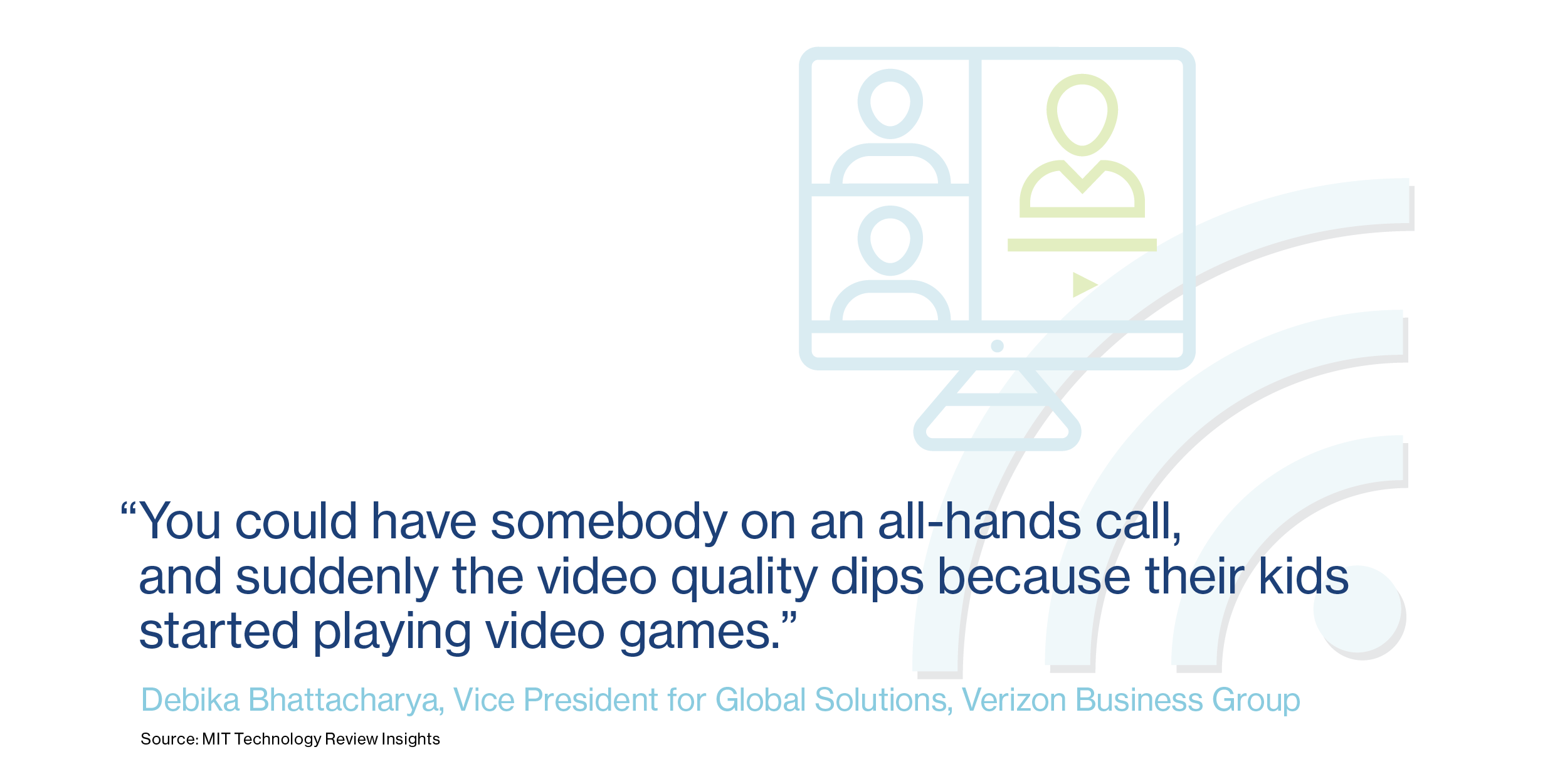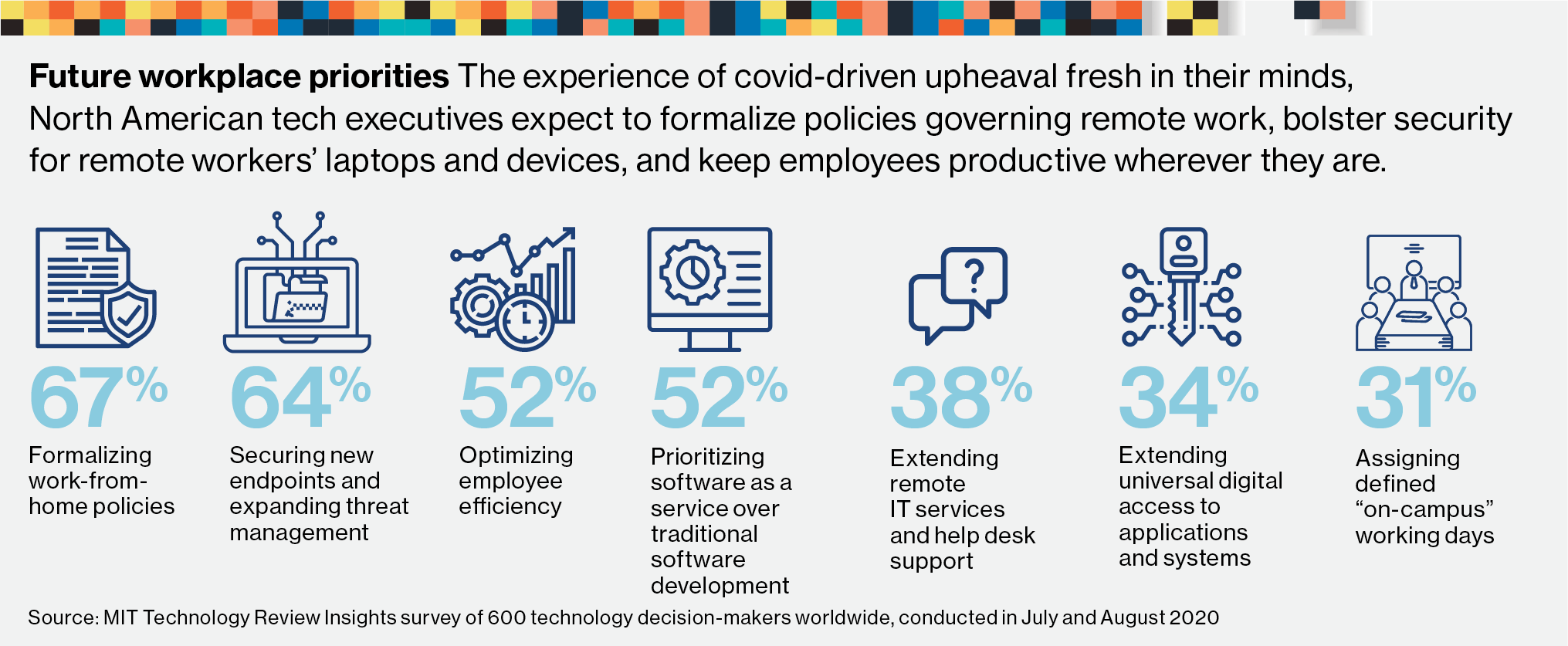Sponsored
Digital acceleration in the time of coronavirus: North America
After the initial shock of the pandemic, organizations swiftly pivoted to respond to changing customer demands and boost growth.
In association withVMware
This MIT Technology Review Insights report is part of a series examining the degree to which business preparedness, particularly in technology strategy, contributed to corporate resilience during the ongoing coronavirus pandemic in three world regions: Asia-Pacific, Europe, and North America. Based on survey research and in-depth executive interviews, the series also seeks to understand how technology priorities are changing as a result of ongoing business-continuity efforts.

Digital acceleration in the time of coronavirus: North America
Business decision-makers around the world were collectively blindsided by the scale and speed that working environments changed as a result of the 2020 coronavirus pandemic. At the same time, a recent survey by MIT Technology Review Insights, in association with VMware, finds that most had inadvertently prepared for the pandemic. More than eight out of 10 North American organizations had already made significant investments in their digital infrastructure and related operational processes—allowing them to take the massive global shift to remote work and online business in stride.
Nearly two thirds (62%) of North American respondents indicate they had business-continuity plans in place, although for many organizations, these were oriented on traditional notions of disaster recovery. “We’re used to dealing with emergencies like tornadoes or hurricanes,” says Debika Bhattacharya, vice president for global solutions at Verizon Business Group. The telecom company had a business-continuity team that was focused on bringing the corporate network back into operation after an outage. This changed since the pandemic. “It became more about, ‘How do we make sure that we’re caring for the well-being of employees who are now working from home?’” Bhattacharya says.
In response, Verizon stepped up communication with its people, with daily video check-ins to determine what employees needed to work from home, be it child-care funding or office equipment. If employees had poor internet service where they lived, the company added additional capacity or otherwise looked to see how it could help. “The focus shifted from just fixing the network to making sure employees are productive,” Bhattacharya says.
Verizon’s experience points to an important distinction between planning for business disruption—usually a momentary event affecting a portion of an organization’s operations—and operating effectively in the pervasive, lengthy pandemic. While a majority of survey respondents had continuity plans, less than half (46%) of them report that these plans were effective.

Yet for a subset of the respondents, there was no doubt over the effectiveness of their business-continuity plans. The linchpin is digital transformation—the incorporation of modern technologies into an organization’s processes or strategies to achieve business goals. Organizations that have fully implemented digital transformation projects—a cohort we’ll call “digital leaders,” representing roughly 15% of North American respondents—all report their recovery plans were effective, and nearly 40% say they were very effective. These organizations made investments in technologies that kept them adaptable and resilient before the pandemic, so they were aptly prepared for the disruption that would follow. Now, at the fore of a constantly changing business landscape where disruption is routine, they’re primed to succeed.
‘We very quickly scaled up’
Digital leaders see their relatively smooth shift to all-remote working environments and digital channels as proof that their digital transformation efforts are working. “Our new CEO recently led our organization through a strategic planning process meant to see us through 2030, and digital platforms were a huge part of it,” explains Mark Wehde, chair of engineering at Mayo Clinic in Rochester, Minnesota. “We envisioned the hospital of the future, moving away from large, complex care centers for routine care to community hospitals and even to people’s homes through the use of remote monitoring tools and AI [artificial intelligence].”
When the pandemic hit, “there was a lot of scrambling,” says Wehde. The organization realized it needed the digital platforms it was planning for immediately. “We need to be able to treat our patients remotely. We need to keep them home as much as possible.” While the crisis revealed that Mayo’s digital transformation was moving in the right direction, it was imperative that they pick up the pace to future-proof against coming unknowns: “We thought we were being pretty bold with our 10-year plan, and what we’ve realized is we probably weren’t bold enough—that we actually do need to accelerate this even more. Our 10-year plan was now a two-year plan.”

The survey results show most organizations pivoted their digital strategies with similar dispatch. Eighty percent of North American respondents believe digital transformation at their organizations has been speeded by the pandemic, slightly higher than the global average of 75%. Nearly all (93%) of the digital leaders surveyed in North America say their digital transformation has accelerated. While there is a new sense of digital-investment urgency, these organizations aren’t starting from scratch.
Download the full report.
Discover how the pandemic sped up digital transformation in other regions of the world.
This content was produced by Insights, the custom content arm of MIT Technology Review. It was not written by MIT Technology Review’s editorial staff.
Deep Dive
Policy
Is there anything more fascinating than a hidden world?
Some hidden worlds--whether in space, deep in the ocean, or in the form of waves or microbes--remain stubbornly unseen. Here's how technology is being used to reveal them.
What Luddites can teach us about resisting an automated future
Opposing technology isn’t antithetical to progress.
A brief, weird history of brainwashing
L. Ron Hubbard, Operation Midnight Climax, and stochastic terrorism—the race for mind control changed America forever.
Africa’s push to regulate AI starts now
AI is expanding across the continent and new policies are taking shape. But poor digital infrastructure and regulatory bottlenecks could slow adoption.
Stay connected
Get the latest updates from
MIT Technology Review
Discover special offers, top stories, upcoming events, and more.